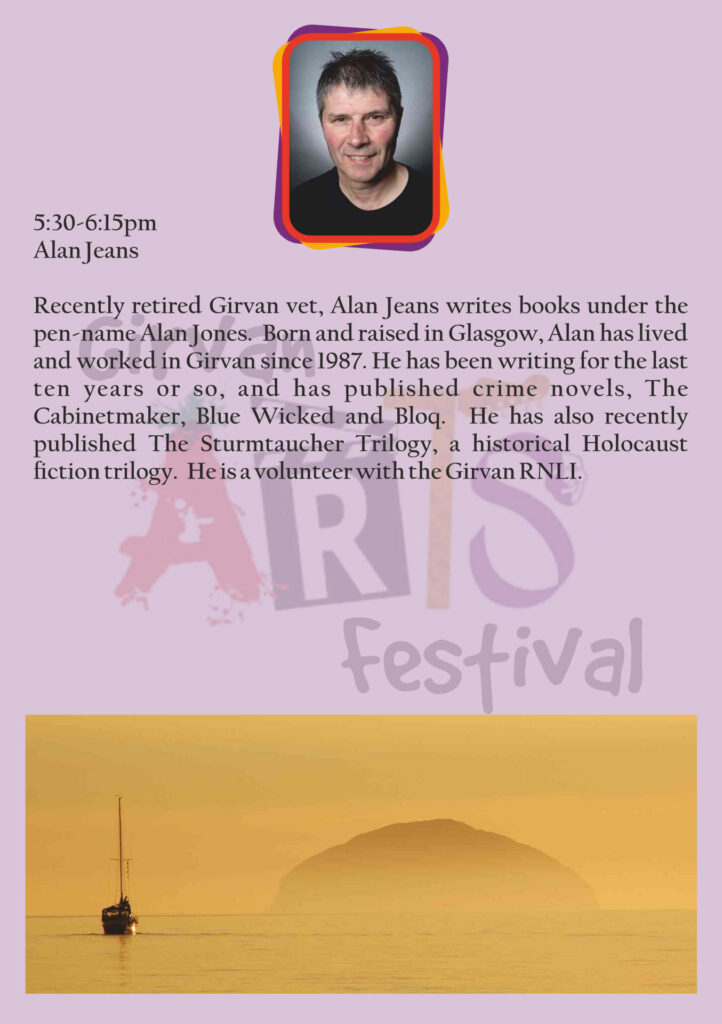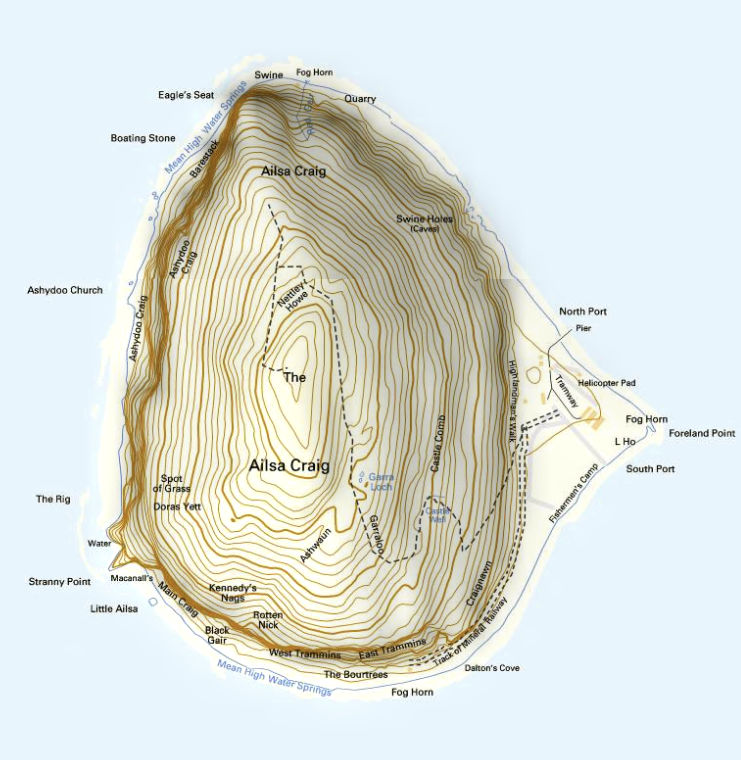And why it’s a big deal.

It’s the inaugural Girvan Arts Festival from the 11th to the 12th of June, and I’ll be appearing on the programme, closing the festival on Sunday evening. The venue holds about 25, when full. It may not seem much, but it’s a big deal to me.
Why? Firstly it’s my home town and I’ll support any initiative to promote Girvan as a cultural hub.
And because I’ve hidden behind a pen name for so long, it is my chance to showcase my writing in my own community.
But there’s another reason.
As a self-published author, getting an appearance at one of the many book festivals that take place every year in the UK is incredibly difficult; in the ten years I’ve been writing, it has only happened once, despite me getting in touch with more than a few organisers of these events.
There are reasonable grounds for this – why should a festival take a punt on an unknown author, without a publisher behind them to give an assurance of quality, and probably with limited book sales under their belt? If it was me, I’d probably think along the same lines.
Despite that, the one festival that did give me a panel (together with a couple of other self published authors, David Videcette and Alison Bailley) was Bloody Scotland, the world-famous crime fiction festival.

It was a number of years ago when, Bloq, my third crime fiction novel did, for a short time, create a small stir in the crime fiction community, and it is credit to Bloody Scotland that they were prepared to put us on the programme, coming on the back of me doing a couple of pop up book launches at the festival – Street Cabinetmaking for my book The Cabinetmaker, and the Bloq Street Nightclub, selling mocktails to festival-goers in Stirling.
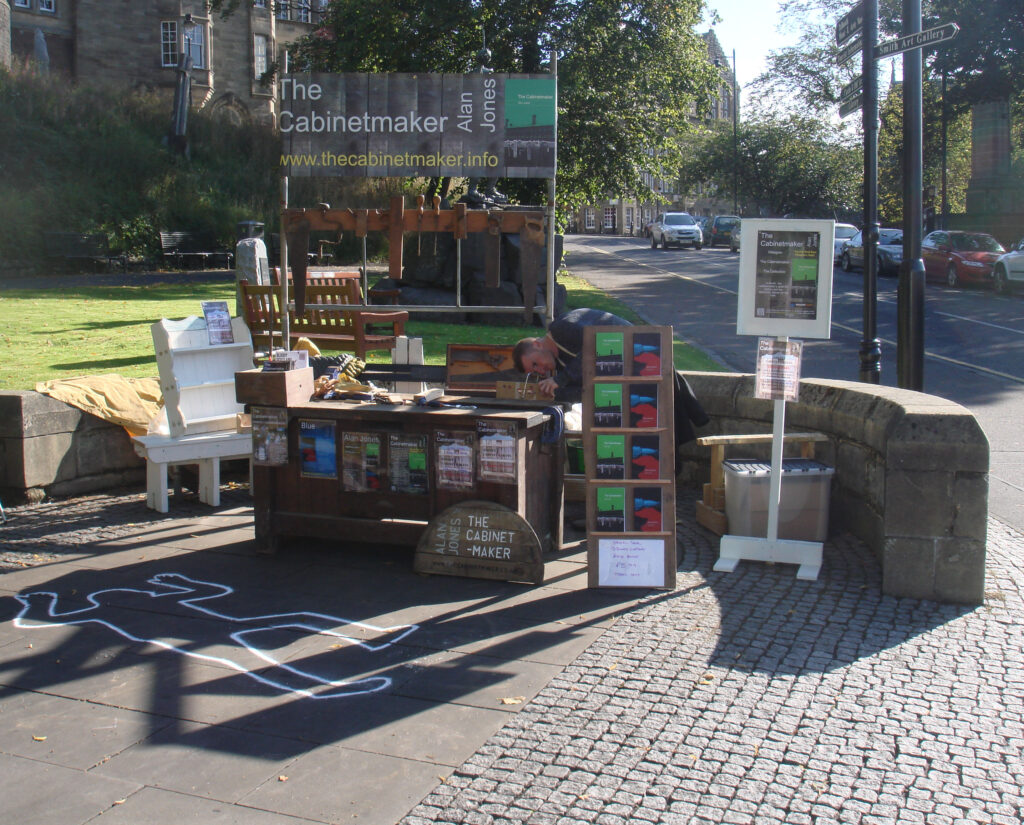
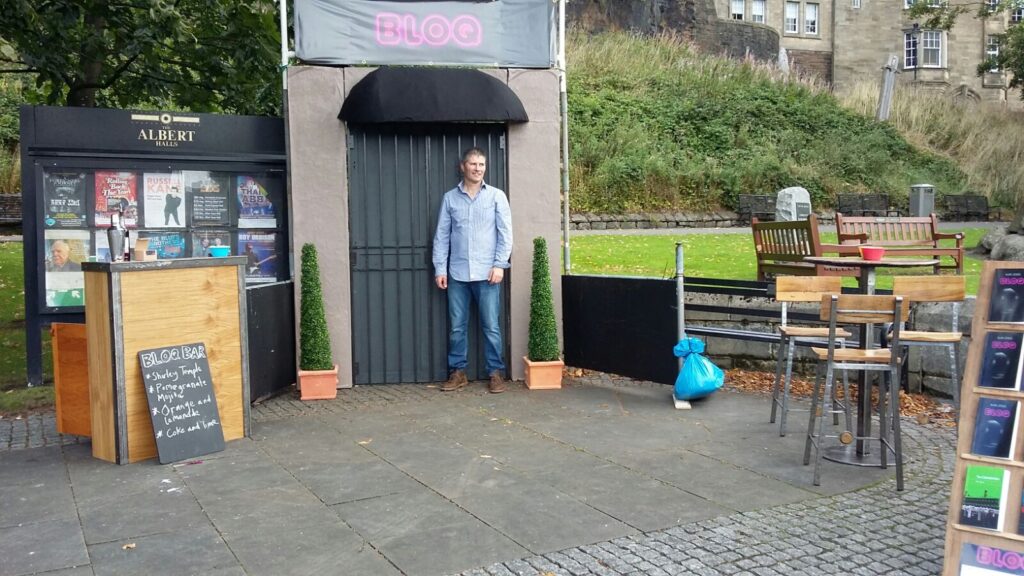
That, a reading at Noir-at-the-Bar in Edinburgh, and a lovely evening with Kirkintilloch Library Book Group being grilled by Sharon Bairden, is the sum total of my public appearances, so I’m looking forward to the upcoming event in the Dome, in Girvan’s Community Gardens, a wonderful venue in a green space at the very heart of Girvan, a stone’s throw from the harbour and the town centre.


I’ll be in conversation with Douglas Skelton, an author with a plethora of crime fiction and true crime books under his belt, who has interviewed some of the greats in Scottish writing, so I was delighted when he agreed to make the trip down to Girvan. And he has connections, with the Girvan area, and with me, long before I started writing.
For a number of years, Douglas and his wife lived in Colmonell, a small village inland from Girvan, with three dogs and a gaggle of cats, and I was their vet while they lived there. Years later, when I started writing, Douglas was a treasure trove of advice on how to get my books out there, which was a real hand up the ladder for me.
We’ll be talking about my books, The Sturmtaucher Trilogy in particular, but we may chat about the writing process too and, of course, we will be taking questions from the audience. Tickets can be purchased on the website. I’d love to see you there.
The Arts Festival is a new event in the Girvan Calendar, joining the successful Girvan Folk Festival, the Ballantrae Food Festival, and the incredibly popular RNLI Harbour Gala as key events in our neck of the woods, and there are a number of sessions over the two days covering everything from fine art, photography and poetry through to music, flowers, and even regenerative farming, so take a look at the programme – there’s something for everyone.
https://girvanartsfestival.com/festival-information
The Girvan Community Garden is a fantastic resource for the people of Girvan, and visitors. It opened to the public in 2011 and has gone from strength to strength. It is entirely run by volunteers and is used for a number of other events throughout the year, and is well worth a visit.
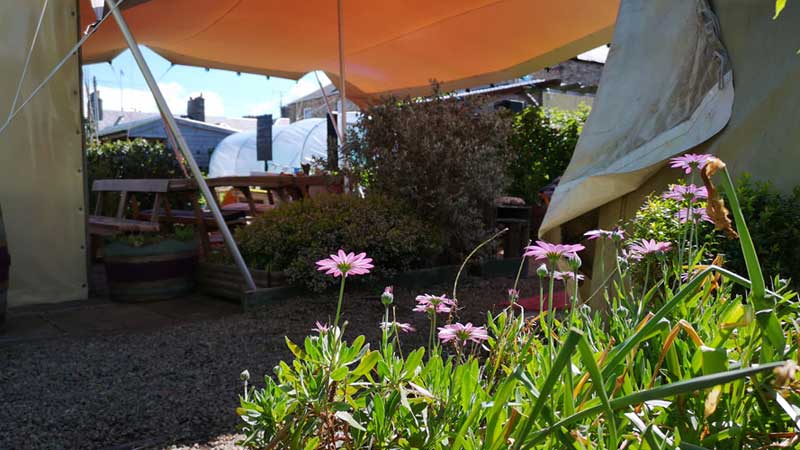

So, please come and spend an hour in our company, and take in some of the other events at the festival, and a look round the garden. You’ll be most welcome.
